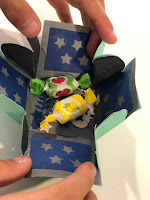Rock Candy
Aim:
To understand the formation of crystallisation
Materials
4 Wooden skewers (cut in half)
1 cups of water
2 cups of sugar ( more or less depending on the environment)
2 clothes pegs
2 glass jars/drinking glasses
Method
Pour 1 cup of water and 1 cup of sugar.
Put it all into a large saucepan, because once you put it on the stove it will expand while boiling.
Mix up the first bit of sugar before putting it on the stove.
Once your pot is on the stove, watch the sugar dissolve and bring it to a low boil over medium heat, and continue to add sugar one cup at a time until you can no longer dissolve any more of it (making a completely saturated sugar solution).
Turn off the heat and allow it to cool for 15 minutes.
While your sugar is cooling you can prep your sticks.
Soak them in water and roll them in a coating of sugar to give the new sugar crystals something to “seed” to.
Be sure to let them dry all the way! If they are still too wet when you put them into the hot sugar solution, all of the sugar coating will fall off, and the new crystals will have nothing to grow on.
CAREFULLY pour your sugar solution into your glass jars.
If you’d like to add food colouring or flavouring to your rock candy, now is the time to do so.
Slowly insert your sugared skewers into the solution.
You can use a clothes peg as shown to keep your sticks in place.
Smaller mouth jars/glasses work best, but only allow room for about two sticks per jar. Be sure that your sticks are not touching the sides or bottom of the glass or each other! They need room for the new crystals to grow!
Set them up in a warm, sunny location where they won’t be disturbed, and wait ( about 3-5 days).
After about a week you will have made yourself a batch of sparkling sugar rock candy!
Conclusion
Two different methods will contribute to the growth of the crystals on the string. You have created a supersaturated solution by first heating a saturated sugar solution (a solution in which no more sugar can dissolve at a particular temperature) and then allowing it to cool. A supersaturated solution is unstable—it contains more solute (in this case, sugar) than can stay in a liquid form—so the sugar will come out of solution, forming what's called a precipitate. This method is called precipitation.
The other is evaporation—as time passes, the water will evaporate slowly from the solution. As the water evaporates, the solution becomes more saturated and sugar molecules will continue to come out of the solution and collect on the seed crystals on the string. The rock candy crystals grow molecule by molecule. Your finished rock candy will be made up of about a quadrillion (1,000,000,000,000,000) molecules attached to the string.
• Why does the string need to be soaked and then dried?
The string will provide the surface on which the crystals will grow. As water evaporates from the string, small crystals of sugar will encrust the string. These tiny seed crystals provide starting points for larger crystals. Future growth will be concentrated around these points.

Comments
Post a Comment